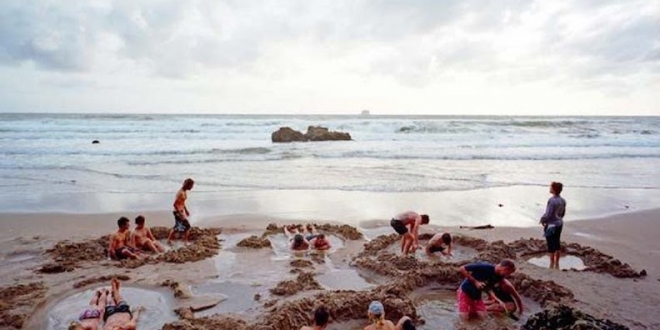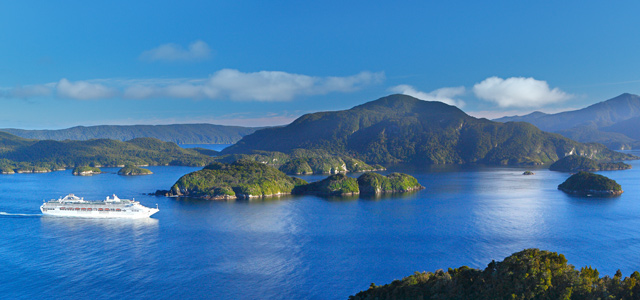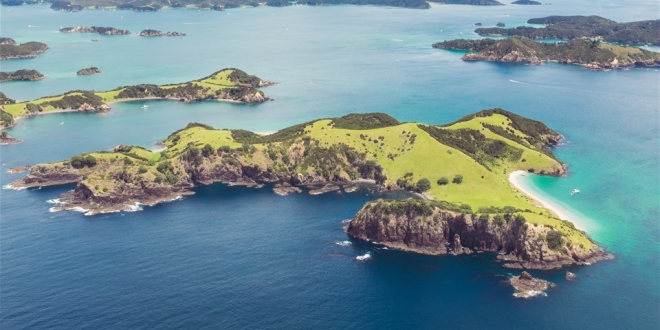If you ever wondered how this stunning country on the other side of our globe got its name, you have to reach back into history to the time of the 1760’s when Dutchman Abel Tasman first spotted the North and South Islands of New Zealand. Tasman named the land he spotted after the State of Zeeland (Sea-Land) in his own country. Captain James Cook sailed around the country in 1769 and it was he who marked it on the map as somewhere Europeans might want to move to. Known as Aotearoa, ‘Land of the Long White Cloud’ in Maori, the two landmasses and their assorted smaller islands extend over 18,000 km of stunning geography comprising coastlines, sheltered bays and Fiords.
Cape Horn, Good Hope, Suez, Panama Canal or Magellan Straits, whichever route you choose, New Zealand is a long, long way away from the Mediterranean, over ten thousand nautical miles and more than 50 days at sea. You don’t go there to be seen, you go there to see and even with a 21-day itinerary mapped out for you by superyacht agents such as the Integrated Marine Group, your eyes will only be skimming the surface.
As an example of how to break up the voyage across, yachts can leave the Caribbean at the end of the season (April) and head for New Zealand via the Panama Canal, arriving there in time for the South Pacific season (June). Stops on the way could include the Galapagos Archipelago, Marquesas, Tahiti, Tonga and Fiji. After cruising around the South Pacific, you can make the last haul across to New Zealand in time for its summer, which begins in November. Here 50 mile-long beaches, spectacular fjords, rainforests, the world’s top diving sites, and extraordinary wildlife await.
Integrated Marine Group based in Auckland, is one of several yacht agents serving superyachts in New Zealand. They all offer a spectacular array of cruising destination ideas that can last as long as you like, there is just so much to see.

1. Start at the top
The obvious thing to do is start at the top and work your way down. Guests who fly in can arrive at the regional airport in Kerikeri, only 30 minutes from the wonderful Whangaroa Harbour. Here they will get a taste of the great variety of fauna and flora of the Islands. Whangaroa is home to the world’s largest striped marlin, the world’s largest Kauri Tree (girth over 13m, 2,000 years old), and spectacular 10m surf at Cape Reinga. At 90-mile beach, 50 miles of pristine sand await you or you can zoom across the dunes on Quad Bikes and Blokarts. Kitesurfing can be seen also be watched and practised at Ahipara Beach.
2. Dive into the deep
The best NZ wreck dive is Green Peace’ Rainbow Warrior sunk at Cavalli Islands. She was sent down to the bottom of the sea at Auckland in 1985 by French saboteurs and is now an artificial reef and is an underwater home to the sea-life she had intended to protect.
3. Visit these beautiful little islands
There are 144 islands in The Bay of Islands making up a massive maritime park, packed with Blue Penguins, Gannets, Manta Rays and Orca. Known as one of the world’s greatest fishing sites, rods will rein in Marlin, Kingfish and Snapper.

4. Oh more diving
The world’s most famous sea-life presenter/diver, Jacques Cousteau, declared Poor Knights Islands one of the top dive sites in the world for sponge gardens and gorgonian fields; home to fish, shellfish, urchins and anemones, and down deep, black coral.

5. Build your own bath
Dig a hot bath from the natural springs in the sand at Hot Water Beach on the Coromandel or take a walk in the wild misty rainforests. Here you can dive, shop (fabulous farmer markets and skilled artisans), abseil (down sleeping God canyon), fish, enjoy picnics and lazy afternoons on the serene pristine beaches, surf the famous Whanga’ waves, or visit the gold mines and beaches of Waihi.
6. Check out the amazing wine
Waiheke is where you find the wine and its vineyards. Tender ashore to Man O’ War vineyard and make your way to their Tasting Room, the only beachfront cellar door location on Waiheke Island. Palm Beach and Onetangi have wonderful white sand and gently sloping beaches to the sea to swim or kayak. More active guests can practice archery, laser clay pigeon shooting or zoom into the recently established zip line park.
7. This is for the adrenaline junkies
Queenstown is where AJ Hackett jumped off Kawarau bridge in 1988 and created the bungee jump craze. You can do NZ’s highest bungee jump over the River Nevis (134m) or jump, leap or be released into the world’s highest cliff jump at Shotover Canyon Swing (200m). Or you can jet boat in Shotover River then head off to explore Dart River by kayak, a film location for Lord of the Rings.
8. Visit one of Rudyard Kipling’s favourite spots
Fiordland, the eighth wonder of the world (according to Rudyard Kipling), is made up of 15 fiords that stretch between Milford Sound and Preservation Inlet. It’s a 200 km swathe of sheer cliffs, mountains thick with ancient rainforests that overlook the fiords and their cascading waterfalls. Diving or fishing are great options here. This is also home to threatened native animals and plants. In the Murchison and Stuart mountains the flightless Takahe bird, believed to be extinct, has been found and is carefully monitored. Endangered Yellowheads, Long-tailed Bats, Blue Duck and Brown Teal are also here. On the offshore islands of South Island Saddleback, rare Fiordland Skinks cling to survival.

9. While you’re there, check out the cute penguins
In Fiordland rainfall drains through the thick forests, staining water with tannins that mean it does not mix well with sea water. It sits on top, limiting the amount of light that reaches into the depths and restricting almost all the marine life at the top 40 metres of water depth. As a result, light-sensitive species that normally live at great depths are found much closer to the surface in Fiordland waters. It has the world’s biggest population of black coral trees, branchiopods, bottlenose dolphins, NZ fur seals and Fiordland Crested Penguins.
10. Lose yourself in the Sounds
It’s 60nm trip from Milford to Doubtful Sound and you can stay overnight at other Sounds on the way. Doubtful is the deepest at 434m and 40 kilometres long! Sometimes called ‘the Sound of Silence’, the Fiord has three ‘arms’: First Arm, Crooked Arm and Hall Arm, of which Hall Arm is said to be the most spectacular.

11. Don’t forget Dusky Sound
More Sounds, and this one’s called Dusky. It’s the biggest Sound and made up of connecting Fiords Breaksea, Wet Jacket Arm (Why? Find out when you get there), Acheron Passage and Dusky. This is where you’ll find the first European house and wooden ship (Luncheon Cove) and Astronomer’s Point where Captain Cook set up an observatory during his second voyage in 1773. This place is also home to NZ’s first brewery and Cook brewed beer here to combat scurvy!
12. Learn about the lighthouse arsonist
Preservation Inlet, known locally as ‘Pressy’, is where the Gold mining took place. Take half an hour to walk out to Puysegar Point Lighthouse which of course has its own story. The Lighthouse was built in 1878 but was burnt down by a gold prospector in 1942. For the previous six months, his home was bathed in the light from the Lighthouse every ten seconds and the poor blighter went mad. He took it to be a deliberate persecution. Out of revenge he burnt down the lighthouse, smashed all the equipment, then hid away on nearby Coal Island with a rifle before being arrested.
If you are in the process of planning an itinerary to visit this beautiful country and would like to know more, Mark Wightman Director of the Integrated Marine Group will be at the Monaco Yacht Show next week. He will be meeting with owners, captains and brokers who would like to understand more about cruising this amazing destination. You can reach Mark on +64 21 608 278 or via email at mark@integratedmarinegroup.com.









.gif)












